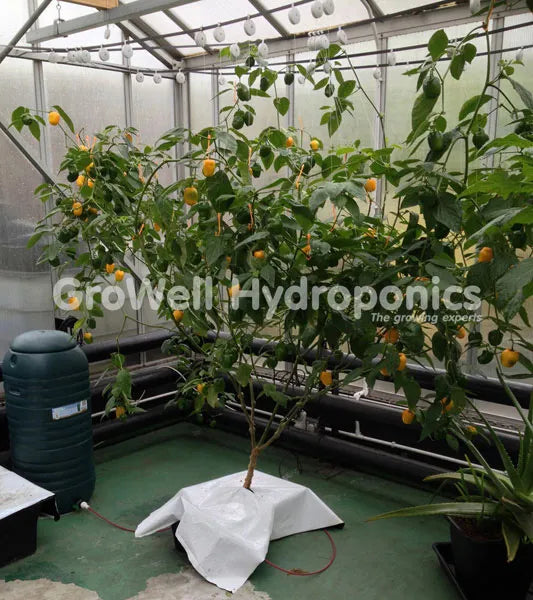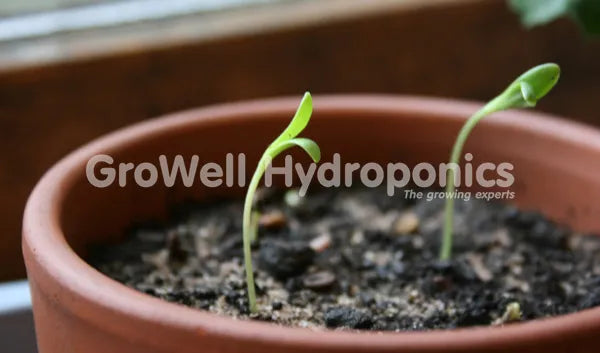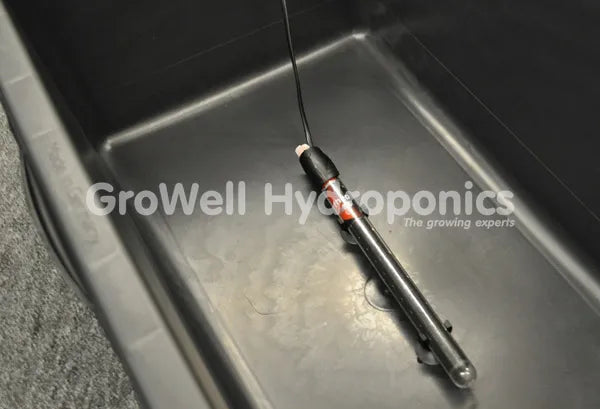
MythBusters: 10 common misconceptions
The rumour mill's been churning and false facts are spreading!
Some of it's down to misunderstanding. Other times, it's caused by companies who twist the truth to half-baked products. Either way, we've heard some bizarre claims.
Let's put an end to this! Here are some common grow myths debunked!
Myth 1: Your Nutrient Solution Should Feel Warm
No, no, no, no, no!
Your nutrient solution should feel cold - at around 18oC - 21oC.
This is warm enough for good growth, but cold enough to keep oxygen levels high.
If your nutrient solution gets too warm, oxygen levels drop. You don't want that - oxygen keeps roots healthy and kills some really nasty root diseases!
To make matters worse, algae loves a warm feed. If algae starts growing, your oxygen content drops further.

Myth 2: You need a timer with an NFT System
Step away from the timer.
Once roots start to show, your pump needs to be on 24 hours a day.
You'll probably be OK leaving it off for 15 minutes at a time - long enough to change your tank. Any longer than this and roots will start to dry.
As moisture evaporates off roots, it cools and damages their surface. You're bound to get Pythium.
Myth 3: You should add CO2 into your nutrient solution
Not true.
The vegetative, leafy part of your plants needs Carbon Dioxide, but roots need Oxygen.
Some additives do contain some carbon based compounds in association with other ingredients. But there's really no benefit to introducing carbon or carbon dioxide into your nutrient solution on its own.

Myth 4: You should stick to a fixed nutrient strength
Nope!
- The CF of tap water varies across the UK
- All plants have different needs
This means it's difficult for manufacturers to recommend a universal target - most have a range.
Even your environment affects the way plants uptake nutrients.
e.g. more light = more food!
As a rough guide, use:
- 1/4 - 1/2 strength feed for young plants
- 1/2 - 3/4 for larger plants
Most manufacturers' full strength is equivalent to about 1200ppm or CF17 (with water at CF 0), which is good for most species and varieties of plant. Some tomatoes need a bit more and lettuces neede a lot less, but you really need to experiment with the specific variety of plant you are using to determine the optimum feed strength.
It's worth reading this article, then testing how plant react to various CF's, making small adjustments at a time.
Myth 5: Leaf colour loss and rusty spots are caused by a nutrient deficiency
Probably not.
Unless you're seriously overfeeding or underfeeding, normally they're caused by something else. Especially when seen together.
The problem's probably caused by an environmental factor, like:
- Lights being too low
- Nutrient too warm
- Poor air exchange
- Wind burn
- Too cold at night
- Too dry grow room
Myth 6: Stretching is a result of one particular issue
It may because there isn't enough light available to them.
Or, it can be because there's too much light or heat. This happens when yout lights are too low.
Then again, it could just be down to genetics.
Either way, you might struggle to find a single reason that explains why your plants are stretching!
Myth 7: Outside air is better for intake
Nope.
Outdoor air is colder and can cause temperature, humidity and bug problems. Introduce it into your grow room at your own peril!
Indoor air is much better. It's closer to the optimum temperature and has a higher CO2 level (due to us breathing!)
By all means, release extracted air outdoors. But you should always draw in air from indoors.

Myth 8: Sucking air through an air cooled reflector will cool your lamp
Almost right...but...don't suck, blow.
If you suck air through, you can end up clogging your fan and reducing its life.
You should only ever blow air through your reflector.
Myth 9: You should tweak the pH in re-circulating systems daily
Never do this...ever.
It's unavoidable - your pH will often rise on a daily basis - especially if you're using rockwool slabs and hard water.
But if you try to bring it back down daily, you can end up with nutrient lock out. This is caused by using too much phosphoric acid. Instead, let it drift up for a day or two - this is the lesser of the two evils. Constant adjustment will only damage your plants!

Myth 10: Too cold is better than too warm
No way!
If your grow room or nutrient solution becomes too cold, this can have a horrible impact on your yield.
Try to keep the temperature of your feeds at 18oC-21oC room temperature between 24oC-28oC.
Don't be afraid to use Nutrient Heaters and Grow Room Heaters to warm things up.









